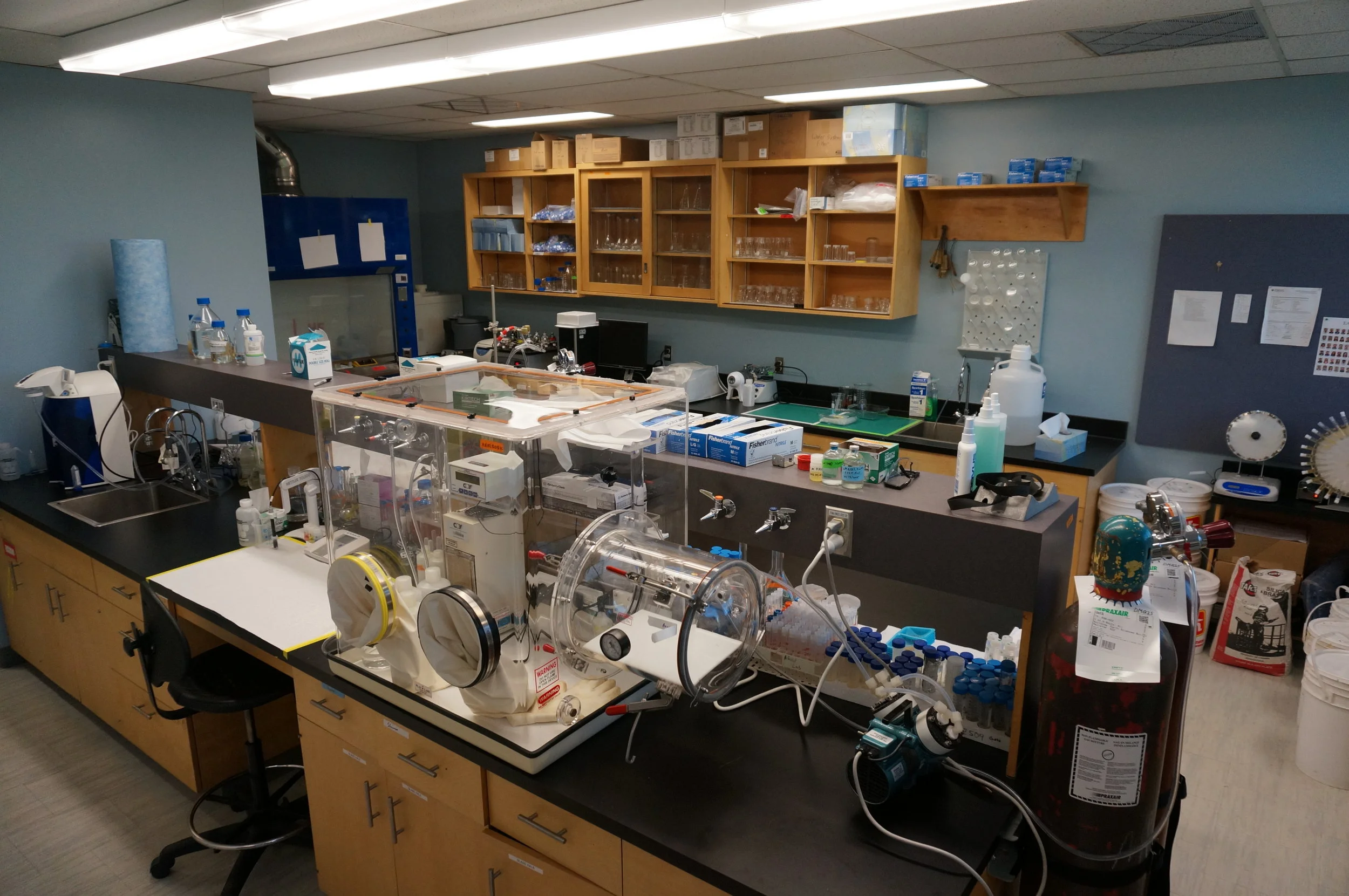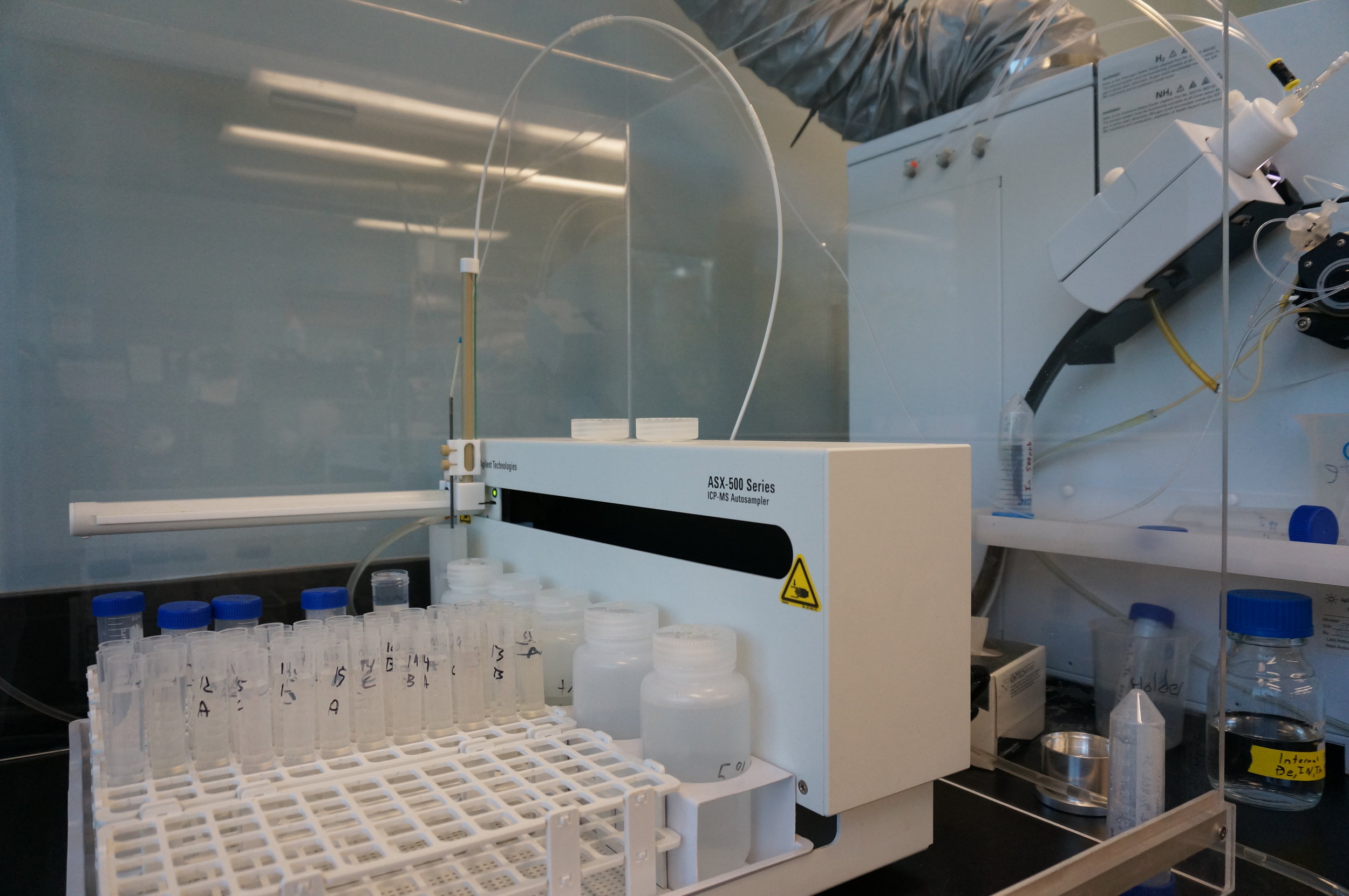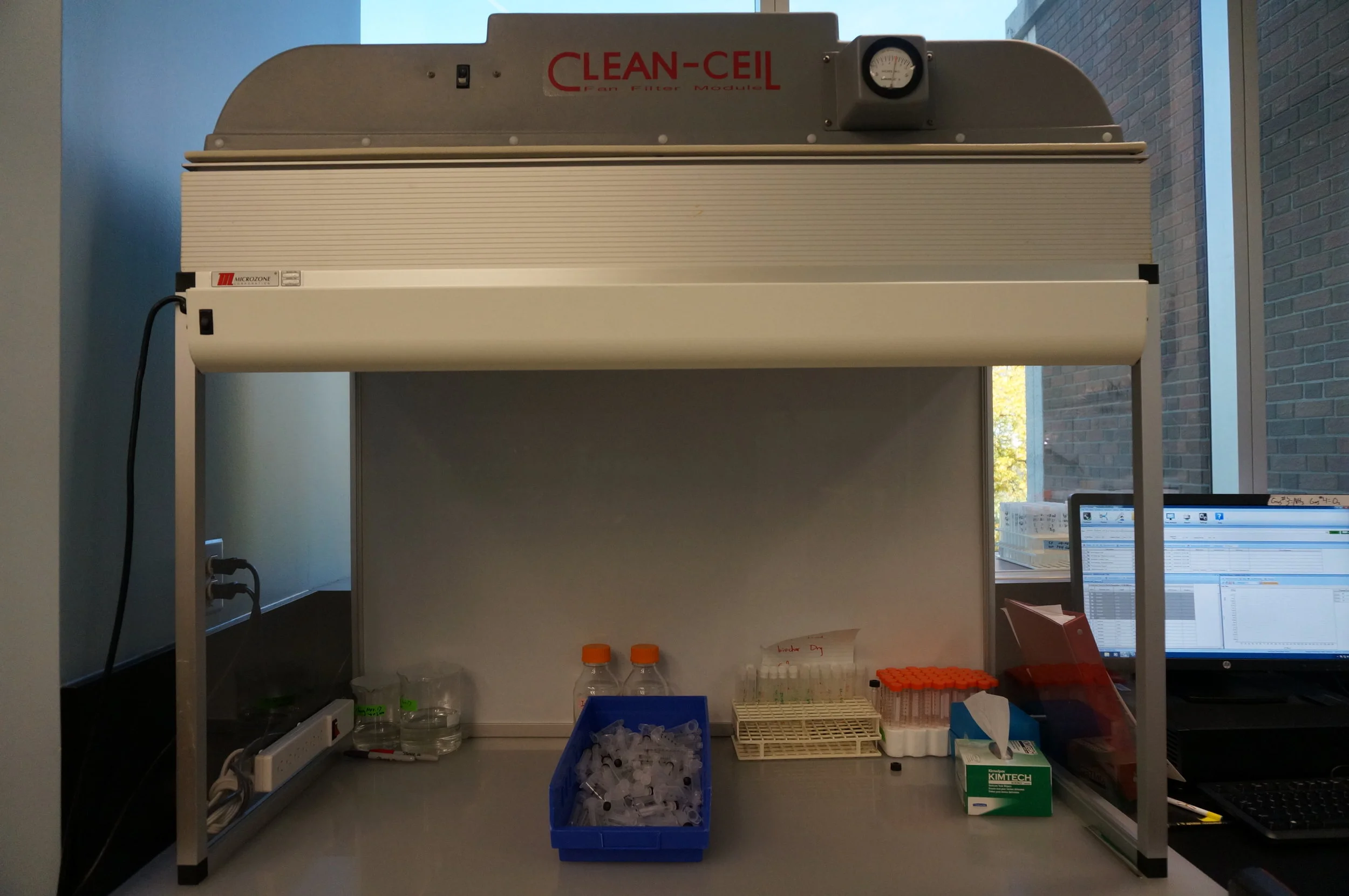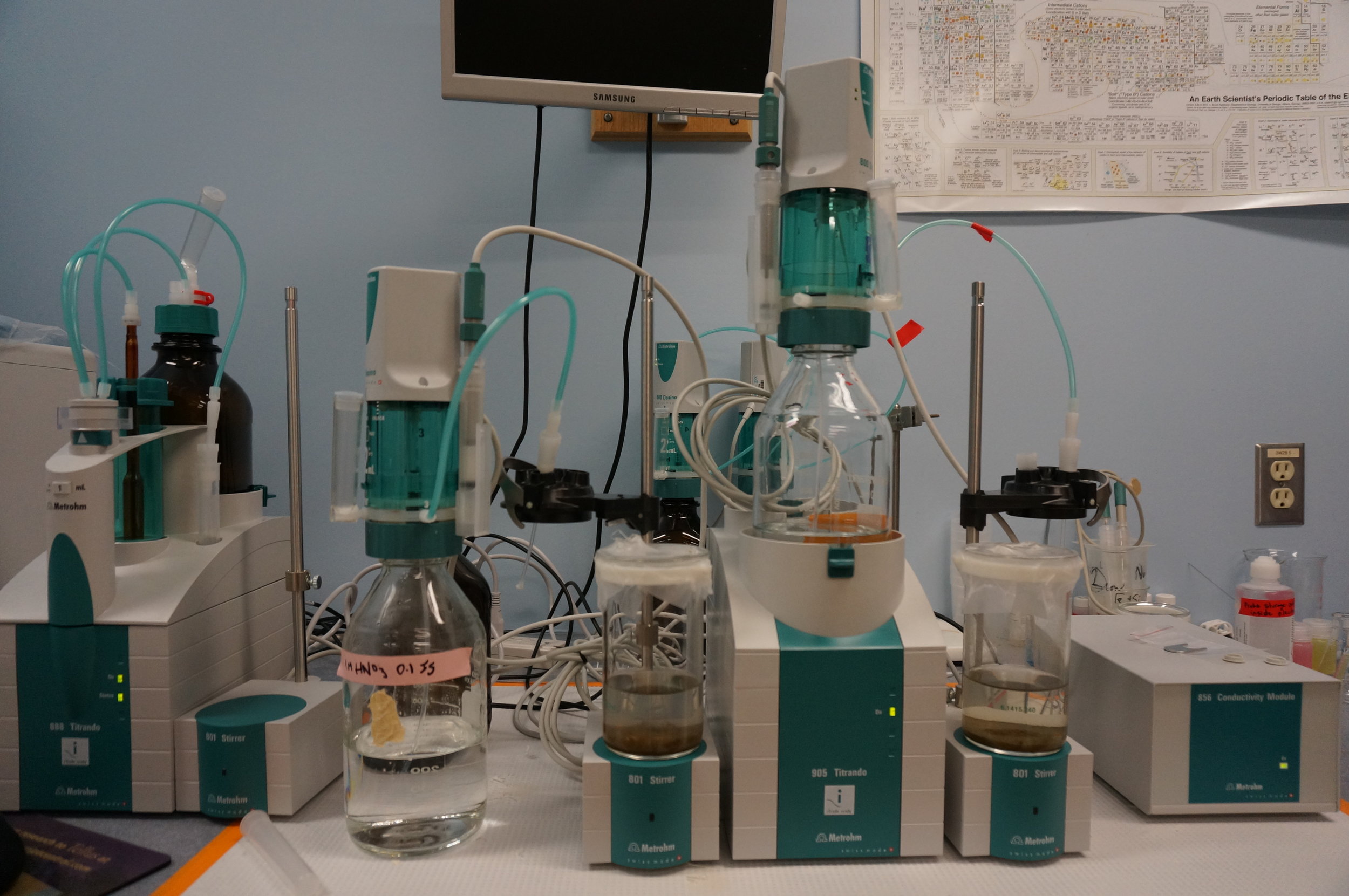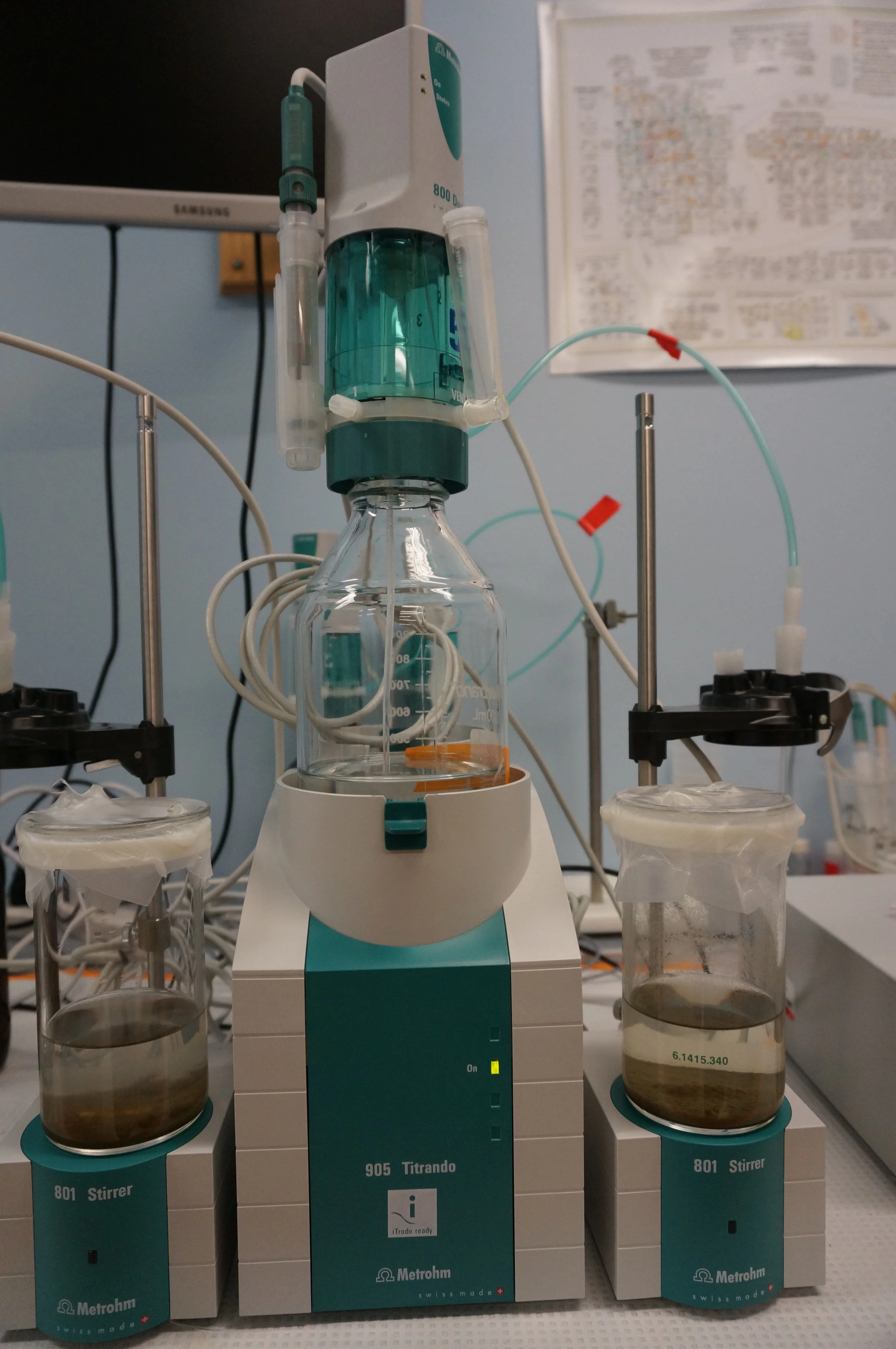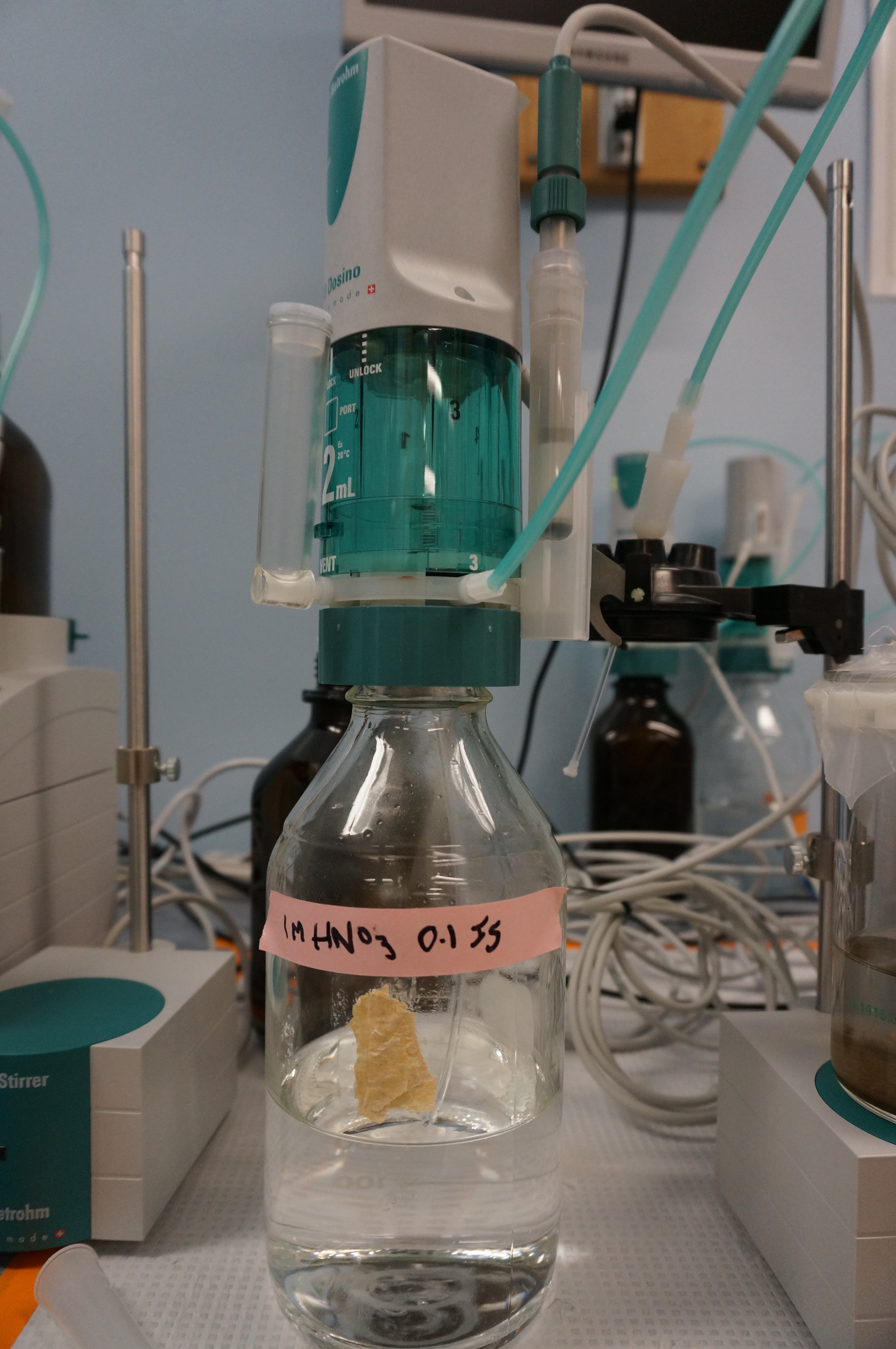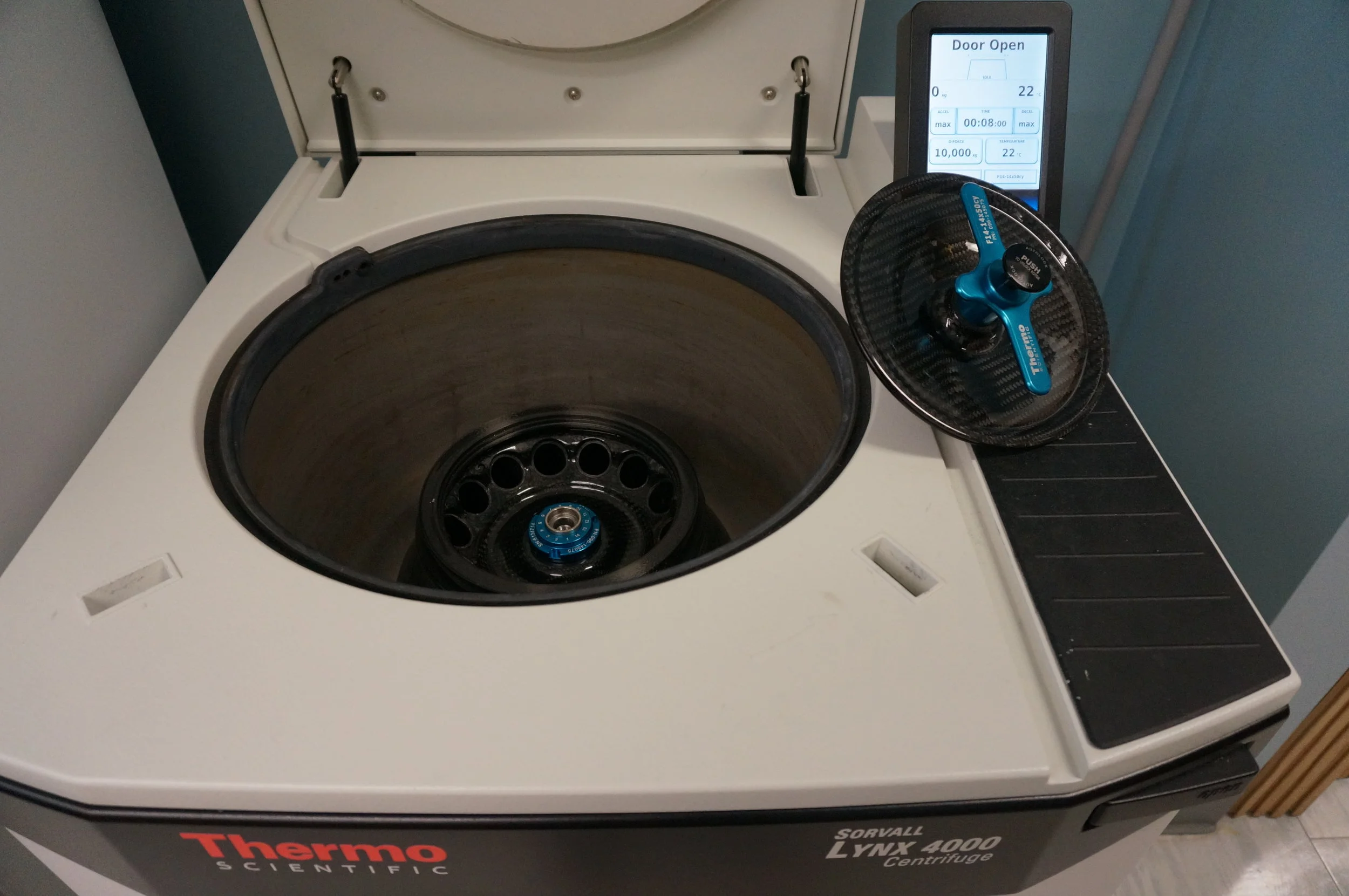Agilent Technologies
8800 Triple Quadrupole
ICP-Ms/ms
Our Agilent 8800 ICP-MS/MS gives us the ability to quantify metals in water and sediment samples down to the single parts per billion (ppb) – high resolution and precision. The 8800 has two capabilities that allows us to work with challenging samples from seawater and highly concentrated brines such as hydraulic fracturing flowback water.
High Total Dissolved Solids (TDS) Introduction System. This introduction system allows us to analyze, with high resolution, samples up to 2500 ppm TDS without dilution.
Gas Reaction Cell. The 8800 has four reaction gases to either remove or mass shift polyatomic and isobaric interferences.
From lithium to uranium, we use the 8800 as a tool in the majority of our work. We are continually pushing the boundaries of the 8800 capabilities. Contact Dr. Alessi if your work could be furthered by the 8800.
Metrohm
TITRANDO TITrATOR
Jointly shared with the laboratory of Dr. Kurt Konhauser, the Metrohm Titrando titrator gives us ability to analyze and quantify the proton reactivity of organic acids, bacteria, and minerals. The Titrando monitors the pH changes and precisely adds concentrated acids and bases (down to 0.002 µL) to the solution. With this precision, we are able to determine the acid/base buffering behavior of a wide variety of materials. Knowledge of proton reactivity allows us to determine pKa values and site concentrations for surface functional groups. We are particularly interested in coupling proton reactivity with metal adsorption experiments to model the metal adsorption potential.
Anaerobic Chamber
We have a custom-made anaerobic chamber with a hydrogen nitrogen atmosphere in which oxygen is removed using a platinum catalyst to convert oxygen to water. This allows us to conduct anaerobic experiments, such as the reduction of uranium. We also use the anaerobic chamber to synthesize of iron (II) minerals, which is important for determining the trace metal concentrations in the ancient ocean and the formation of banded iron formations.
Hydrofluoric (HF) Acid Digestions
We have the capacity to conduct total rock digestions for analysis of total elemental composition using hydrofluoric acid. To do this, we use teflon vessels and a custom-made aluminum heat block.
Thermo Scientific
Evolution 60S UV-Visible Spectrophotometer
Our Thermo Scientific™ Evolution 60S UV-Visible spectrophotometer allows us to conduct quantitative determination of different analytes. With a 1.0 spectral bandwidth over the wavelength range of 190 -1100 nm, the system provides high resolution of our samples. We use the spectophotometer largely in our work of colorometric assays, such as hexavalent chromium analysis by the diphenylcarbazide (DPC) method, Fe(II)–ferrozine complex analysis, and optical density for bacterial cell counts.
Thermo Scientific
Sorvall Lynx 4000 centrifuge
Our Thermo Scientific™ Sorvall™ LYNX 4000 Centrifuge has the capacity to centrifuge six samples at 500 mL or 14 samples at 15 or 50 mL. It maintains a temperature controlled environment (-10° to +40°C) and reaches maximum forces in excess of 68,000 g, depending on the rotor used.
